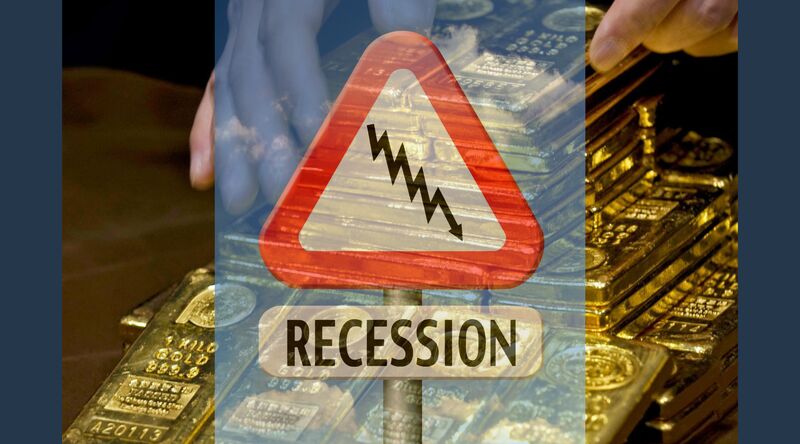Uber Stock's Recessionary Performance: A Deep Dive

Table of Contents
Impact of Inflation and Rising Fuel Costs on Uber's Profitability
The current inflationary environment significantly impacts Uber's profitability. Rising fuel costs and increased operational expenses directly affect both driver earnings and Uber's bottom line.
Increased Operational Expenses
- Soaring Fuel Prices: The dramatic increase in fuel prices directly translates to higher costs for drivers, potentially reducing their earnings and incentivizing them to reduce driving hours. This leads to a decrease in the available driver pool, impacting Uber's ability to meet demand and potentially increasing wait times for riders.
- Impact on Uber's Bottom Line: Uber's commission structure means a portion of these increased driver costs indirectly affects their profitability. Higher fuel prices necessitate either absorbing some of the costs, potentially decreasing profit margins, or passing them on to consumers through increased fares.
- Driver Retention and Acquisition: Higher fuel costs can negatively affect driver retention and acquisition. Drivers may switch to alternative employment opportunities or reduce their Uber driving hours, leading to supply shortages and decreased service quality. Uber needs to implement effective strategies to retain its driver base during these challenging times.
- Mitigation Strategies: Uber has implemented dynamic pricing and introduced fuel surcharges to partially offset the rising fuel costs. The effectiveness of these strategies in balancing driver compensation, rider affordability, and Uber's profitability remains to be seen.
Impact on Consumer Spending
Inflation significantly reduces consumer discretionary spending. Ride-hailing services like Uber are often considered discretionary expenses, making them particularly vulnerable during economic uncertainty.
- Reduced Ride-Sharing Demand: As consumers tighten their belts, demand for ride-sharing services may decline. People may opt for cheaper alternatives like public transportation, carpooling, or even cycling.
- Shifting Consumer Preferences: The increase in fuel costs is passed onto consumers, thus reducing the attractiveness of Uber compared to other transportation options. This necessitates Uber to explore cost-effective solutions or potentially losing customer base to competitors.
- Data-Driven Analysis: Analyzing data on ride frequency, trip distances, and overall ridership during past economic slowdowns will give crucial insights into current consumer behavior. This data can help predict future trends and inform Uber's strategies.
Changing Consumer Behavior and Demand for Ride-Sharing Services
Consumer behavior is significantly impacted by economic conditions. This section analyzes how shifting travel patterns and increased competition influence Uber's demand and market share.
Shifting Travel Patterns
- Work-From-Home Trends: The rise of remote work significantly reduces daily commutes, directly affecting Uber's core business of transporting commuters. A decrease in daily commutes has a substantial impact on Uber's revenue.
- Impact on Business Travel: Reduced business travel due to remote work and economic uncertainty also decreases demand for Uber's services. This sector previously represented a significant portion of Uber's revenue.
- Uber Eats Growth: While ride-sharing may be affected, Uber Eats, Uber's food delivery service, might experience increased demand as people opt for home delivery instead of dining out due to increased costs. This diversification mitigates some of the risks associated with reduced ride-sharing demand.
Competition and Market Share
Uber operates in a competitive landscape, facing rivals like Lyft, traditional taxis, and expanding public transportation systems.
- Competitive Landscape: The intensifying competition requires Uber to strategize effectively to maintain and improve market share during recessionary periods. Pricing strategies and service differentiation play crucial roles.
- Market Share Strategies: Uber needs to implement strategies like targeted marketing campaigns, improved driver incentives, and enhanced app features to retain and attract customers.
- Industry Consolidation: The possibility of mergers, acquisitions, or the emergence of new players can dramatically shift the competitive landscape, and this must be considered in evaluating Uber's future performance.
Uber's Financial Performance and Strategic Responses
Analyzing Uber's financial performance and strategic initiatives is crucial for understanding its resilience during a recession.
Revenue and Earnings Analysis
- Key Financial Metrics: Analyzing revenue growth, profit margins, earnings per share (EPS), and other key financial metrics offers valuable insights into Uber's financial health. A year-on-year comparison helps observe trends and assess resilience.
- Industry Benchmarks: Comparing Uber's performance against its own historical data and industry benchmarks provides a broader context for evaluating its success in managing recessionary pressures.
- Visual Representation: Charts and graphs depicting Uber's financial data make it easier to understand trends and identify areas of strength and weakness.
Strategic Initiatives and Adaptation
Uber has implemented various strategies to navigate the challenging economic environment.
- Cost-Cutting Measures: Implementing cost-cutting measures, such as streamlining operations and reducing marketing expenses, can positively impact profitability.
- New Service Offerings: Introducing new service offerings, expanding into adjacent markets, or enhancing existing services can create new revenue streams and increase resilience.
- Management Changes: Any significant changes in management or corporate strategy should be analyzed for their potential impact on the company's future performance and stock price.
Conclusion: Investing in Uber Stock During a Recession
Understanding Uber stock's recessionary performance requires a careful evaluation of various factors. While inflation and changing consumer behavior pose significant challenges, Uber's strategic responses, including its diversification into food delivery and cost-cutting measures, could provide some resilience. However, the level of competition and the overall economic climate remain crucial factors to consider.
This analysis highlights the complexities of investing in Uber stock during a recession. The impact of inflation on operational costs, shifts in consumer behavior, and Uber's strategic adaptation all play vital roles in determining its future performance. Understanding these interconnected factors is crucial for making informed investment decisions regarding Uber stock. Continue your research and stay informed on this evolving landscape before making any investment decisions related to Uber stock.

Featured Posts
-
 Investing In Ubers Autonomous Driving Tech Through Etfs
May 17, 2025
Investing In Ubers Autonomous Driving Tech Through Etfs
May 17, 2025 -
 How Tom Thibodeau Rescued The Knicks Addressing A Persistent Flaw
May 17, 2025
How Tom Thibodeau Rescued The Knicks Addressing A Persistent Flaw
May 17, 2025 -
 Tenis Efsanesi Djokovic 37 Yasindaki Bir Sporcunun Guecue
May 17, 2025
Tenis Efsanesi Djokovic 37 Yasindaki Bir Sporcunun Guecue
May 17, 2025 -
 Knicks Success Thibodeaus Transformation And The Overcoming Of A Weakness
May 17, 2025
Knicks Success Thibodeaus Transformation And The Overcoming Of A Weakness
May 17, 2025 -
 Poslovne Prilike U Ujedinjenim Arapskim Emiratima
May 17, 2025
Poslovne Prilike U Ujedinjenim Arapskim Emiratima
May 17, 2025
Latest Posts
-
 Roma Monza Minuto A Minuto En Directo
May 17, 2025
Roma Monza Minuto A Minuto En Directo
May 17, 2025 -
 Ver Crystal Palace Nottingham Forest Online Donde Y Como
May 17, 2025
Ver Crystal Palace Nottingham Forest Online Donde Y Como
May 17, 2025 -
 Free Live Stream Ny Knicks Vs La Clippers Nba Game On March 26 2025
May 17, 2025
Free Live Stream Ny Knicks Vs La Clippers Nba Game On March 26 2025
May 17, 2025 -
 Crystal Palace Nottingham Forest En Directo Alineaciones Y Previa
May 17, 2025
Crystal Palace Nottingham Forest En Directo Alineaciones Y Previa
May 17, 2025 -
 How To Watch The Ny Knicks Vs La Clippers Nba Game Online On March 26 2025
May 17, 2025
How To Watch The Ny Knicks Vs La Clippers Nba Game Online On March 26 2025
May 17, 2025
